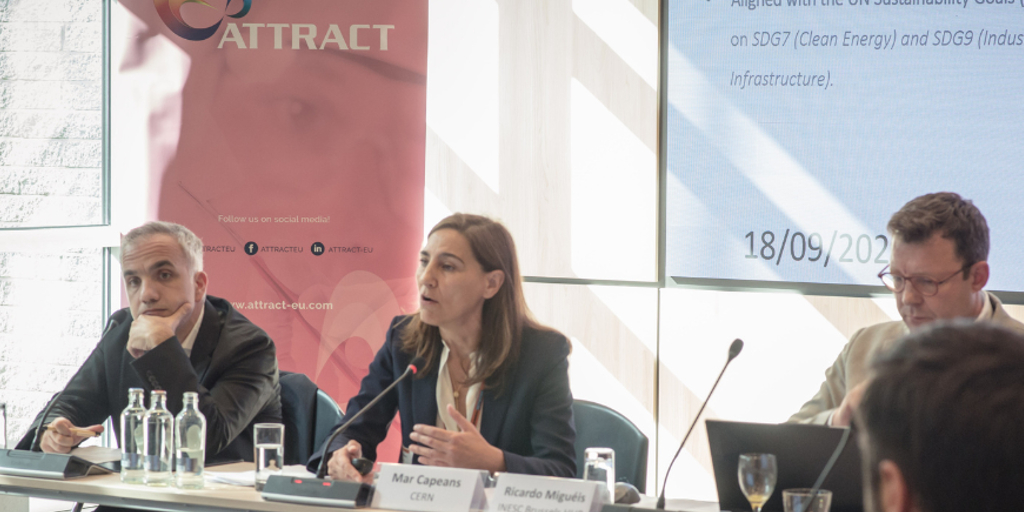Copyright © Photo by ATTRACT stories video
The HYGER project is developing a new type of infrared detectors at a reasonable price that will allow to see in the dark, detect small cancer tumours and revolutionize the detection limits of scientific equipment. Researchers want to make them better than before, so the signal-to-noise ratio should be better than in state-of-the-art detectors.
For this reason, the research team uses their ATTRACT phase 1 material level discoveries so that they can nanostructure the surfaces so that they can absorb nicely all the infrared light that comes to the detector surface. In this second phase, they are working with experts from different parts of the detector value chain to scale up the technology from the previous phase to industrial system-level prototypes and commercial products.
Dive into the HYGER project with this interview featuring Hele Savin, Professor at Aalto University and head of the Electron Physics research group.
What is your personal and career journey so far?
I studied at Aalto University and got my PhD degree there in semiconductor technology. Then I was a postdoc in quite many different places: Fraunhofer Institute for Solar Energy in Germany, MIT in Boston, and UC Berkeley in California. Currently, I am a full professor at Aalto University. I’m heading my own research group there. And our group name is Electron Physics Research Group.
What is the project about? And which partners are involved?
So, in this new project, we take the ATTRACT phase 1 material-level discovery as a background. So, there we developed these nanostructures for germanium that can absorb infrared light very efficiently. Secondly, we also developed a novel type of pn-junctions using an induced junction generated by the charge in the thin film instead of the conventional doping techniques. So, we try now to combine the actual detectors made on high-purity germanium and then, as a result, show that they are much better than the state-of-the-art detectors. The partners who are involved are Umicore from Belgium, which fabricates high-quality germanium substrates; and then we have also Baltic Scientific Instruments from Latvia, they have high expertise in hyper germanium detectors.
What challenges have you faced so far?
For this hybrid germanium detector, the actual detector system requires very thick germanium substrates, while our background and tools are mostly developed originally for thin wave substrates, so we have had some challenges in adjusting our tools and technology to fit also the thick substrates.
How would you explain the potential implications of this breakthrough to a non-scientific audience?
There are quite many applications where infrared detection can be used. The fact that we see only with human eyes visible wavelength range, which is quite narrow. So, now if we were able to see infrared light which also surrounds us all the time, I think it would change our minds quite nicely because you would not be able to differentiate whether it’s day or night because during the night, you could also see as well as with the daytime. In medical science, we can get better information about different diseases and diagnostics. On the other hand, space technology could benefit as well if we are able to detect the infrared radiation in space better than before, we may find out something new about our universe.
For more information
Visit the HYGER project site.
Copyright © Photo by ATTRACT stories video The HYGER project is developing a new type of infrared detectors at a reasonable price that will allow to see in the dark, detect small cancer tumours and revolutionize the detection limits of scientific equipment. Researchers want to make them better than before, so the signal-to-noise ratio should […]



